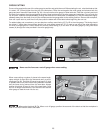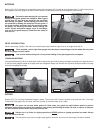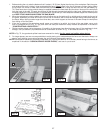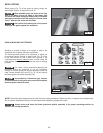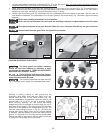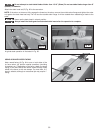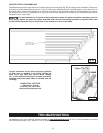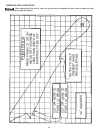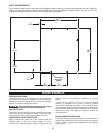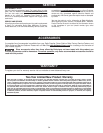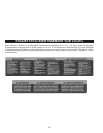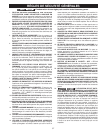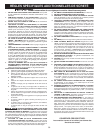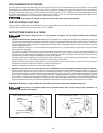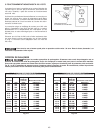
33
If you desire to make a shelf for your saw, use the diagram below for the size of plywood and placement of holes. Attach the
shelf to the stand and mobility kit while it is still upside down during the assembly procedure. Attach the shelf, once cut, by
driving wood screws through the holes in the overhang of the leg supports.
SHELF MEASUREMENTS
19
1
/4”
(489 mm)
3
/8”
(9.5 mm)
22
7
/16”
(570 mm)
6
7
/32”
(158 mm)
Drill holes
using 5/16”
drill bit
8”
(203 mm)
5
5
/8”
(143 mm)
10”
(254 mm)
3
/8”
(9.5 mm)
MAINTENANCE
KEEP MACHINE CLEAN
Periodically blow out all air passages with dry compressed
air. All plastic parts should be cleaned with a soft damp cloth.
NEVER use solvents to clean plastic parts. They could possibly
dissolve or otherwise damage the material.
Wear certified safety equipment for eye, hearing
and respiratory protection while using compressed air.
FAILURE TO START
Should your machine fail to start, check to make sure the prongs
on the cord plug are making good contact in the outlet. Also,
check for blown fuses or open circuit breakers in the line.
LUBRICATION & RUST PROTECTION
Apply household floor paste wax to the machine table and
extension table or other work surface weekly. Or use a
commercially available protective product designed for this
purpose. Follow the manufacturer’s instructions for use and
safety.
To clean cast iron tables of rust, you will need the following
materials: a pushblock from a jointer, a sheet of medium
Scotch-Brite™ Blending Hand Pad, a can of WD-40
®
and a
can of degreaser. Apply the WD-40 and polish the table surface
with the Scotch-Brite pad using the pushblock as a holddown.
Degrease the table, then apply the protective product as
described above.
BLADE RAISING AND BEVELING
If the blade raising and leveling mechanisms become difficult to
operate, clean sawdust from the worm and sector gears (shown
in Fig. 71). Apply a graphite-based lubricant that will not attract
and hold dust.



